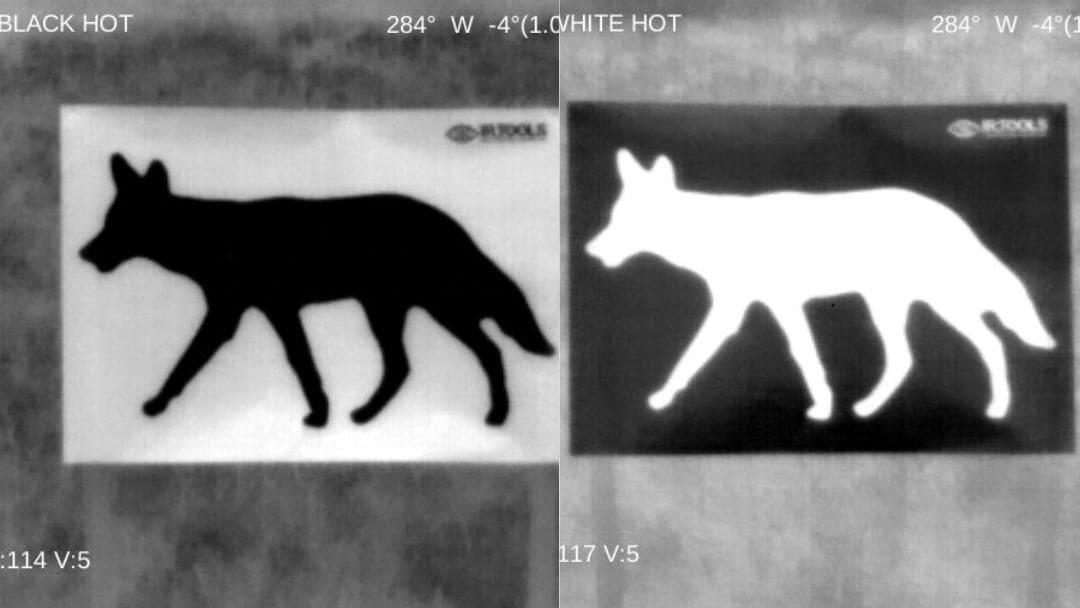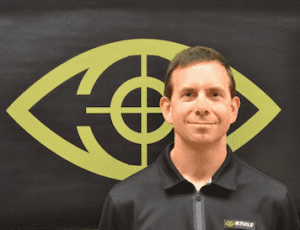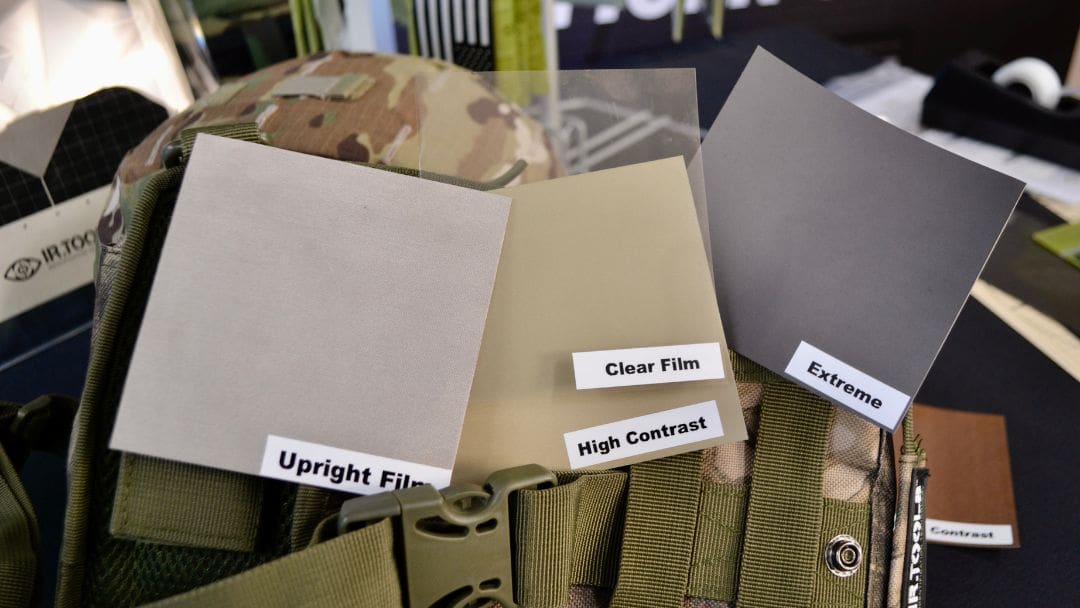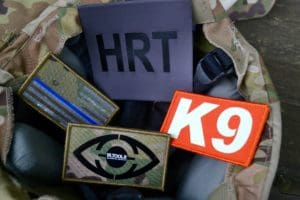Passive, No Power, Low-Emissivity, Reverse Polarity
Juliet said to Romeo:
- Passive
- No Power
- Low-E or Low Emissivity
- Reverse Polarity
Overall, thermal film is very bad at giving off heat (thermal infrared energy) and very good at reflecting heat (thermal infrared energy).
1. Passive Film
The most frequently associated name with thermal film and all infrared films is PASSIVE.
The passive feature of the film refers to how the film reflects heat (infrared energy) in its surroundings. This is the opposite of “active” thermal panels which produce heat from electricity or chemical heaters.
Passive thermal film responds to the temperatures around it and reflects the temperatures off. Therefore the film appears cold. Because the film appears cold and the temperatures around it are warm this creates a color contrast you see with your thermal device. While all the other objects in the scene appear warm, the passive film will always appear cold.
Depending on your palette settings, the film could appear white, black, or various shades of blue and purple.
2. No Power Film
Next to passive, No Power is a term used very often to describe thermal film. Initially when the film was first introduced for target training, “no power” was the name given.
It is very simple. No Power means no power source is needed.
No electricity, no batteries, and no chemical heaters are required for the film to function effectively. All you need is the film and a thermal device. The no power feature opens up a range of possibilities for different operational and training scenarios. The film is lightweight and travels easy.
In some cases when power is added to thermal film, if the power is disabled the film will continue to function. Thermal films do require a power source to work indoors.

3. Low Emissivity
4. Reverse Polarity
4 Names = 1 Film
Thermal film is rapidly finding more and more applications anywhere thermal devices are used. This list is in no way comprehensive as thermal devices are implemented into more sectors and industries daily.
| Thermal Imaging Application | Thermal Film Application |
|---|---|
| Thermal Weapon Sights | Thermal Training Targets, Zeroing Targets, Thermal Camouflage, Personal Identification |
| Handheld Thermal Imaging Cameras | Thermal Markers, Signs, Personal Identification |
| Airborne Law Enforcement | Thermal Vehicle Markers, Signs, Personal Identification, |
| Pilot Navigational Equipment, Drones | Landing Zone Demarcation, NIST Training |
| Consumer Thermal Imaging Cameras | Reference markers on property |
| Industrial Thermal Imaging Cameras | Building calibration markers for cameras and systems |
| Building Thermal Analysis | Reference marker on buildings |

Since 2006, Tom has been the driving force behind IR.Tools, dedicated to delivering top-notch infrared solutions to the military, law enforcement, and sportsmen communities.
What began with a single infrared patch has blossomed into a comprehensive store featuring hundreds of IFF patches, vehicle IFF, an extensive suite of thermal training targets, and tools for drone pilots.
Beyond his innovative products, Tom is passionate about educating users on infrared technology and showcasing how advancements in IR can enhance their operations.
Tom holds an MS in Mechanical Engineering from the University of Maryland and an MBA from Regents University.


